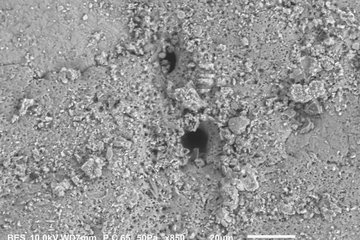New insights into the late history of Neandertals
The genomes of five late Neandertals provide insights into Neandertal population history
Researchers at the Max Planck Institute for Evolutionary Anthropology in Leipzig, Germany have sequenced the genomes of five Neandertals that lived between 39,000 and 47,000 years ago, thereby learning about some of the last remaining Neandertals in Eurasia. These late Neandertals are all more closely related to the Neandertals that contributed DNA to modern human ancestors than an older Neandertal from the Altai Mountains that was previously sequenced. Their genomes also provide evidence for a turnover in the Neandertal population towards the end of Neandertal history.

Due to the limited number of specimens and difficulties in obtaining endogenous DNA from such old material, the number of Neandertals for which nuclear genomes have been sequenced is still limited. Since 2010 whole genome sequences have been generated for four Neandertals from Croatia, Siberia and the Russian Caucasus. This study adds five new genomes representing Neandertals from a wider geographic range and from a later time period than what was previously obtained.
New methods for the removal of contaminating DNA from microbes and present-day humans that were developed by the Leipzig group have now enabled the researchers to sequence the genomes of five Neandertals from Belgium, France, Croatia, and Russia that are between 39,000 and 47,000 years old. These therefore represent some the latest surviving Neandertals in Europe.
Having genomes from multiple Neandertals allows the researchers to begin to reconstruct Neandertal population history. “We see that the genetic similarity between these Neandertals is well-correlated with their geographical location. By comparing these genomes to the genome of an older Neandertal from the Caucasus we show that Neandertal populations seem to have moved and replaced each other towards the end of their history”, says first author, Mateja Hajdinjak.
The team also compared these Neandertal genomes to the genomes of people living today, and showed that all of the late Neandertals were more similar to the Neandertals that contributed DNA to present-day people living outside Africa than an older Neandertal from Siberia. Intriguingly, even though four of the Neandertals lived at a time when modern humans had already arrived in Europe they do not carry detectable amounts of modern human DNA. “It may be that gene flow was mostly unidirectional, from Neandertals into modern humans”, says Svante Pääbo, Director at the Max Planck Institute for Evolutionary Anthropology.
“Our work demonstrates that the generation of genome sequences from a large number of archaic human individuals is now technically feasible, and opens the possibility to study Neandertal populations across their temporal and geographical range”, says Janet Kelso, the senior author of the new study.
MH, JK/SJ/HR












